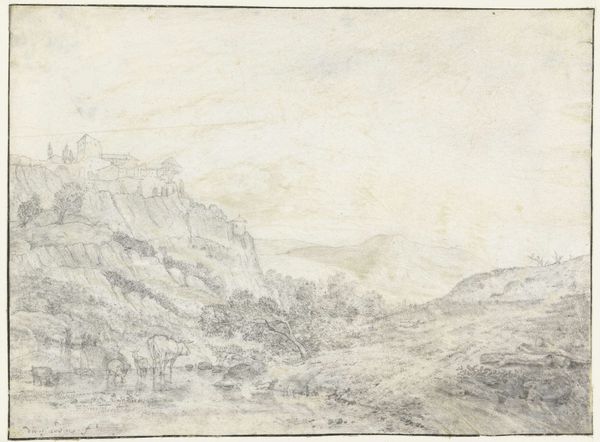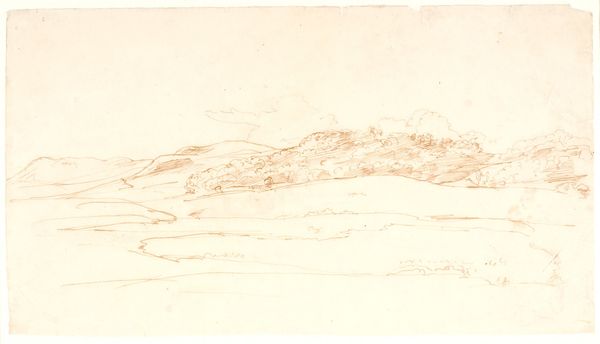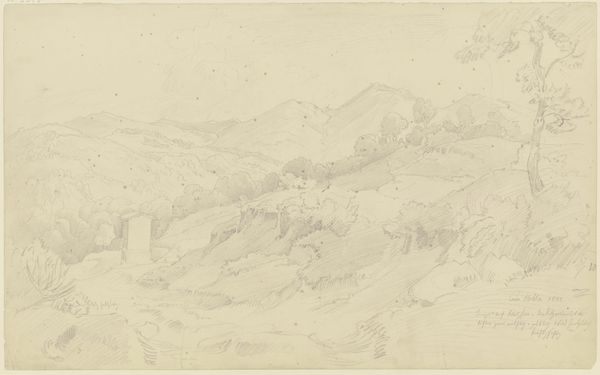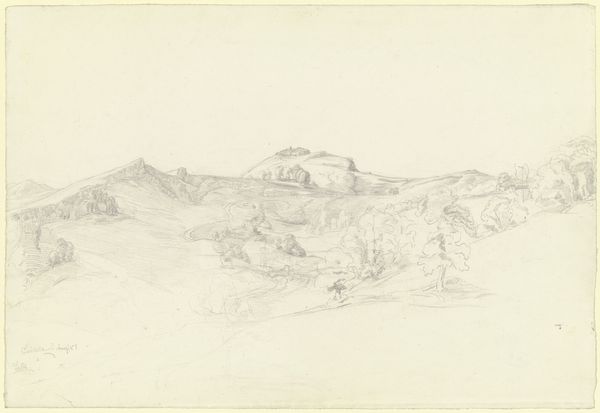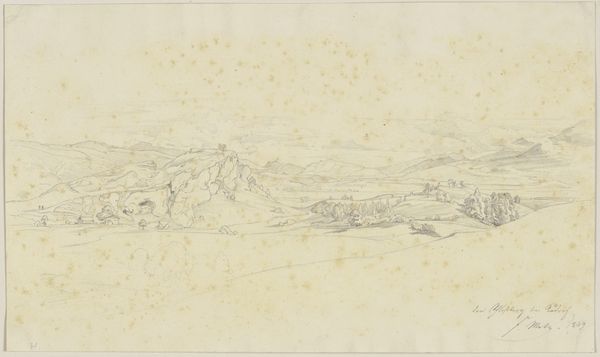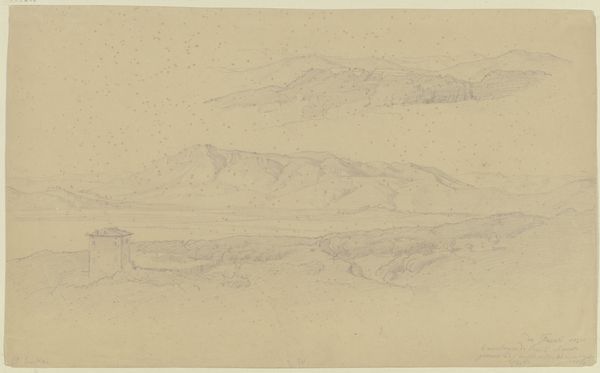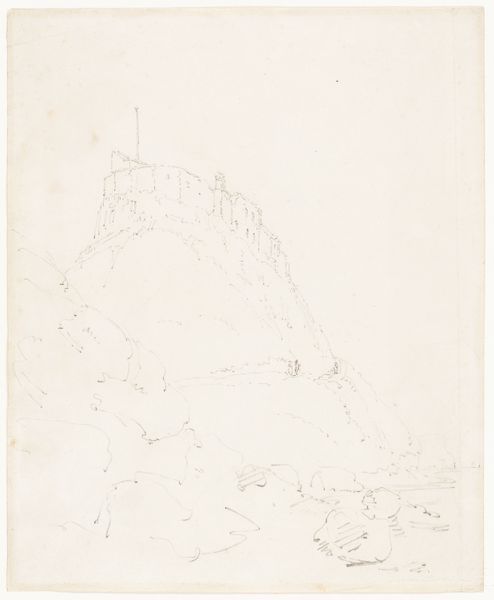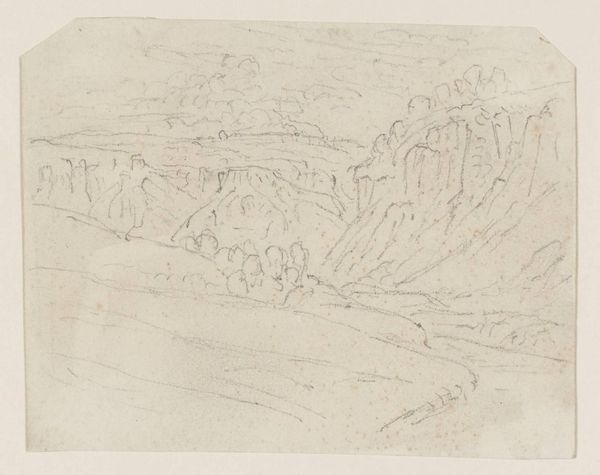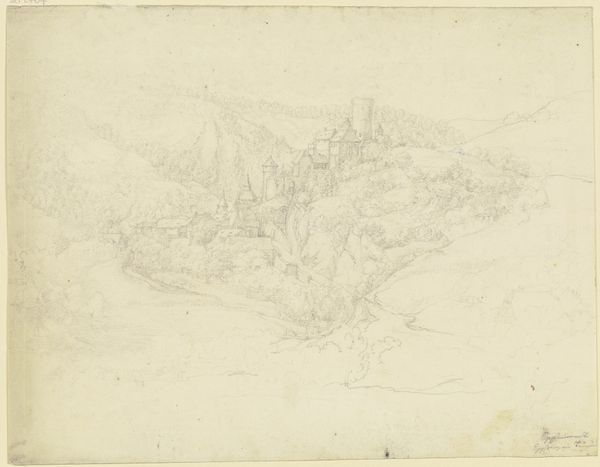
drawing, pencil
#
drawing
#
landscape
#
etching
#
romanticism
#
pencil
Dimensions: 169 mm (height) x 232 mm (width) (bladmaal)
Curator: Dankvart Dreyer completed "Klinteparti ved Bovbjerg," or "Cliffside near Bovbjerg" in 1843. The drawing, executed in pencil, captures a vista in Denmark, and it is currently held in the collection of the Statens Museum for Kunst. Editor: It evokes a stark sense of isolation. The pale tones lend the landscape an ethereal quality, yet the crisp lines detailing the cliff face have an austere edge. Curator: The work emerges from the Romantic era in Denmark. At this time, the identity of the region was forming. These landforms became cultural icons representing ideas of belonging and nationalism. Bovbjerg, with its dramatic cliffs and proximity to the sea, held symbolic significance for the Danish people. Dreyer’s focus on it is no accident, it echoes an effort to define the country through its landscapes. Editor: Right. And considering its scale and execution—it appears more of a sketch—it leads one to ponder the implied human presence within the expansive natural setting. Those figures, small as they are, are carefully placed throughout the image, as if punctuating the relationship between human and environmental realms. This begs the question of scale and our place in the face of monumental landscapes. Curator: Yes, the placement of figures suggests their relationship with nature. The figures at the base, and another standing high atop the cliff all point to humans asserting dominion over land. We might also reflect on class, though it is harder to tell in the lack of definition, each set appears to exist differently in relation to the setting, pointing to social structures and a hierarchy over natural spaces. Editor: Perhaps this invites a discourse around access. Whose access? Who gets to traverse and inhabit the landscape. Is the act of 'belonging' equitable in this nationalistically charged image? Curator: Indeed. Dreyer’s piece shows the potential complexity even within seemingly straightforward landscape portrayals, allowing one to tease out cultural anxieties present in this era. It's a glimpse of art operating in the background to larger social structures. Editor: Yes. These pencil strokes contain stories within stories about humanity’s place within—or perhaps struggle against—the natural world. A very nuanced vision, I’d say.
Comments
No comments
Be the first to comment and join the conversation on the ultimate creative platform.
